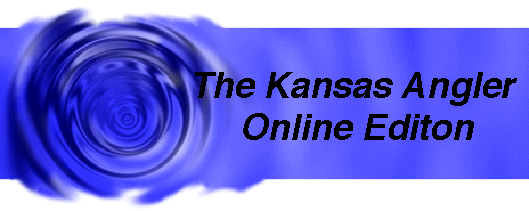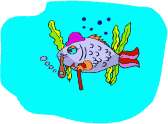 |
Fishing Stories from Ned Kehde |
|
Fishing Reports Reader's Nook Angler's Academy Club Corner Tournament Trail Success Stories Kansas Angler Info Angler Links |
Submitted by Ned Kehde - November 9, 2000 Richard Gebhardt lives a stone's throw from the banks of the Missouri River, and he has plied its currents and tributaries for catfish for almost a half of a century. So when the World Wide Catfish Anglers Tournament Series announced that their October Catfish Extravaganza would be held at the Gebhardt's hometown of Glasgow, Mo., on Sept. 30-Oct. l, he was deemed to be the favorite to win the $4650 check for a first-place finish. Moreover, he lived up to that pre-tournament billing by winning a tournament downstream at Weldon Springs, Mo., on Sept. 24. Nowadays Gebhardt angles primarily for big blue catfish, and he does it year-round. His forte rests with his abilities to probe the deep rocky shorelines that are buffeted by a fast current. Before he became bewitched by big blue cats, he spent many summer days pursing channel cats on sandbars, and sometimes he caught them in water so shallow that the cats' dorsal fins poked out of the water. Thus he knows how to probe the Missouri's shallow environs, too. Gebhardt says those shallow spots with a slow-to-moderate current are easy lairs to fish. So that is where most anglers ply, and at times they catch blue cats aplenty particularly in late summer. According to Gebhardt, legions of blue cats gambol across the shallow sandbars and gumbo flats at night in August and September to feed on carp. Traditionally, the best flats and bars lay between two wing dikes and are covered with six to 15 feet of water. But Gebhardt suspected that the cold front, which hit central Missouri on Sept. 23 and dropped water temperatures into the 60s, had put an end to that shallow-water feeding. Instead of working those shallow areas, he spent his time probing deep coverts in 25 to 35 feet of water that were surrounded by a brisk current. This is where the cats abide when they are resting. At these spots, Gebhardt tries to catch the cats that are in that groggy phase between resting and rapacity. The current around these spots can be so intense that most anglers can't properly anchor their boats. What's more, if they can anchor, they usually can't get their bait down into the blue cat's lair. However, Gebhardt has conquered the current at these deep holes by designing and building special anchors that hold his boat in the fastest current. And to get his bait in the proper place, Gebhardt makes long and accurate casts with eight- to l2-ounce weights. He doesn't fish a spot unless his sonar pinpoints a large quantity of big fish. During this 24-hour tournament, he traveled 26 miles and examined scores of deep hideaways. But to his chagrin, many spots were nearly barren of fish life. Yet, Gebhardt's sonar did reveal a scattering of big fish at l5 deep-water locales, and he fished them. Even though he fished those spots hard and methodically for 24 hours, using fresh carp heads and shad bellies, Gebhardt failed to garner a bite. Some other contestants, however, caught an impressive array of cats For instance, the team of Sam Cook of Glasgow and Chris Noll of Armstrong, Mo., fished several gumbo flats in 15 feet of water several miles downstream from Glasgow, where they caught l26.2 pounds of catfish and won the tournament. Mark Thompson of Ottawa and John Jamison of Springhill took second place by traveling 50 miles upstream to a sandbar and catching nine cats that weighed 117.6 pounds in seven feet of water. After seeing those big catches, Gedhardt turned philosophical and said that he overestimated the effects of the cold front, because the cats had continued their summertime ways of foraging on the flats. |
|
Kansas Angler Online Sponsor  |
Copyright 2000 by The Kansas Angler - P.O. Box 12261 - Wichita, KS 67211 - Phone 316-265-5551 Questions or problems with this website should be directed the link above. This Page Last Updated on date shown at top of page. |

